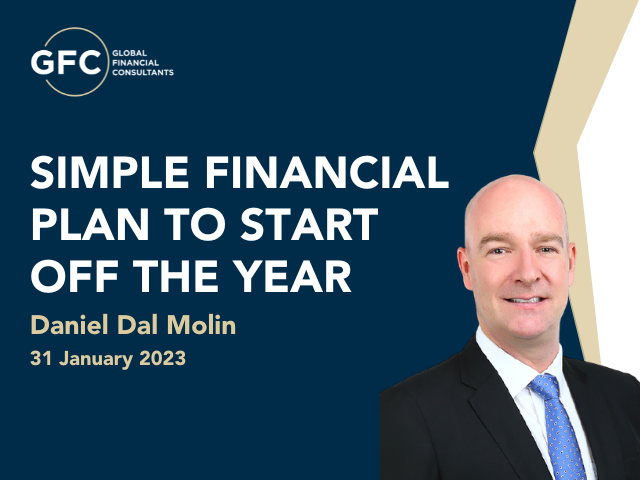Global Financial Consultants - Simple Financial Plan To Start Off The Year

When clients ask me how to set out a simple financial plan for the year, I like to suggest that they start and end with two values in mind, which I do each year for my own financial plans. These two are: -
a. Make a summary of savings, investments, and retirement assets as of the 1st of January so I know how I have started the year and can eventually compare these with the end-of-year values.
b. I like to think about how I would like to end the year (usually my list starts with having savings and no credit card debt), so as to start the next year investing rather than paying off credit card debt.
HOW DID I START THE YEAR
Recently I attended an event where I had a chance to talk to a few fellow Australian Expatriates working away from home. In each case, I started the conversation – “Do you know what your current superannuation balance is? Within $5,000?” In most cases, no one did, or they only had a rough idea.
The best way to start the year is to make a summary, in excel, of all the assets that you will hold for the next two years or more.
I usually start with a column for each year so I can track the values and compare each year going forward. You don’t need any fancy computer programs, a normal excel chart will do.
I will include in this summary: fixed deposits, shares, bonds, other portfolios, retirement accounts, portfolio/insurance bonds, superannuation, and pension plans.
When looking at a year-on-year basis, everyone will be different. If you are working in a low-tax country, you really should want to be putting aside at least 10% of your gross salary (the same as the superannuation guarantee back in Australia), and if possible more than 20% or 30% of your gross salary would be great.
If you have the numbers at hand, have a look at what it was like a year ago. Was there an improvement or not? Markets were off this year so you may expect some lower values.
After comparing these values to last year, I look at each group and see if I can help make better returns on those funds. Maybe the fixed deposit funds need to be looked at and see where I can earn a little more. Maybe the shares are invested in very conservative options, so we may want to add a little risk for a better return.
What about our super, is superannuation in a super fund that is cost comparative cheaper than the market average? Do I need to invest in funds of shares and bonds, or is an index fund more appropriate as they are a better cost option?
For us financial advisers, we make use of these numbers and the values of your income and expenses to be inserted into our program to estimate the value of your assets at the time of your retirement and if you need to increase savings to achieve your planned retirement sum/ yearly income at retirement.
END OF YEAR
I have always thought that the best way to plan the year is by thinking about how you want to end the year. For me, with a family, usually, the plan is to end the year with a $0.00 credit card balance and savings in the bank. In order to do this, you need to put money away during the year, preferably each month, in order to cover your large expenses and for your holidays. We usually take two holidays in the year. Hence, in the first half of the year, I put aside money for our June school holidays. During the next few months, I will save for the December holidays and purchase the air tickets early to secure some decent prices, saving on cost.
Apart from this, I like to put away 20% of my net earnings each year. People have different requirements, needs, and expenses, but personally, I like the 20% mark as it ensures that at the end of the year, I have some funds to invest at the start of the next year. Having no large credit card bill makes it very easy to allocate.
If you need help with planning your finances and working out how to invest, please do reach out.
Daniel will provide free financial consultations for the first 10 people who reach out to him.
Email: daniel.dalmolin@gfcadvice.com
Number: 9058 9568
